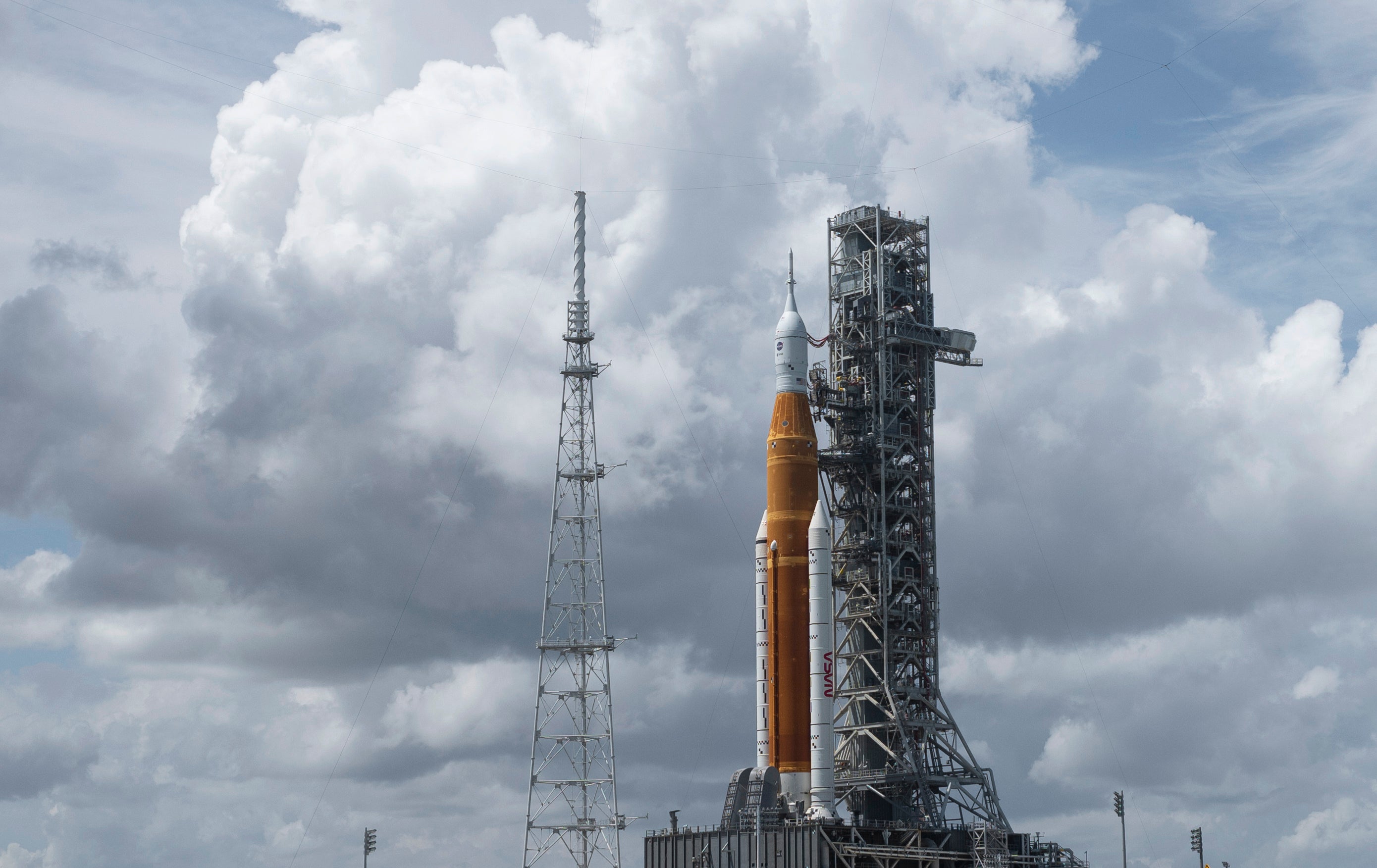Nasa sets date for next Artemis I Moon mission launch attempt
After overcoming technical challenges and a major Hurricane, Nasa hopes to finally launch its big Moon rocket next month

Your support helps us to tell the story
From reproductive rights to climate change to Big Tech, The Independent is on the ground when the story is developing. Whether it's investigating the financials of Elon Musk's pro-Trump PAC or producing our latest documentary, 'The A Word', which shines a light on the American women fighting for reproductive rights, we know how important it is to parse out the facts from the messaging.
At such a critical moment in US history, we need reporters on the ground. Your donation allows us to keep sending journalists to speak to both sides of the story.
The Independent is trusted by Americans across the entire political spectrum. And unlike many other quality news outlets, we choose not to lock Americans out of our reporting and analysis with paywalls. We believe quality journalism should be available to everyone, paid for by those who can afford it.
Your support makes all the difference.After overcoming engine troubles, fuel line leaks, and a major hurricane, Nasa is ready for the third launch attempt of its Artemis I Moon mission. Lift off has been scheduled for no earlier than 12.07am EST on Monday 14 November.
Backup launch dates for the mission include Wednesday 16 November beginning at 1.04am EST, and Saturday 19 November, beginning at 1.45am EST, according to a Nasa blog.
An uncrewed test flight of Nasa’s Space Launch System (SLS) rocket and Orion spacecraft, Artemis I will serve as a shake down for flight systems, and an opportunity to run experiments, as Orion flies around the Moon and back to Earth. A launch on 14 November would result in a 25 and a half day long mission, with Orion splashing down in the Pacific Ocean on Friday 9 December.
The SLS rocket and Orion have been stored in Nasa’s rocket hangar at Florida’s Kennedy Space Center, the Vehicle Assembly Building, since 26 September, when the space agency rolled the rocket back from the launch pad to protect it against potential damage from Hurricane Ian.
The Hurricane weakened to a tropical storm before reaching Kennedy Space Center, and Nasa indicates very little maintenance work will be needed to get the big rocket ready for the launch pad once again. The space agency currently plans to roll SLS and Orion back to launch complex 39B on Friday 4 November.
Nasa first attempted to launch the Artemis I mission on 29 August, but scrubbed that launch after discovering problems in cooling one of the big rocket’s engines to the appropriate temperature for launch, a process known as thermal conditioning. The space agency has since resolved to begin that part of the launch process sooner to give all four of the main stage RS-25 engines, the same engines used on the space shuttle, a chance to condition properly.
Nasa’s second launch attempt on 3 September was scrubbed due to leaking liquid hydrogen at the connection between the line pumping fuel from the ground and the rocket’s fuel tank.
The space agency made repairs and adjustments to its pre-launch procedures. They conducted a test on 21 September to show the big rocket should no longer leak hydrogen during fueling, but any shot at another launch attempt that month was blown by the impending arrival of the major Hurricane Ian.
If Nasa is finally able to get Artemis I off the ground in November, it will be the first step of an ambitious project to put humans back on the lunar surface. A successful Artemis I mission will lead to Artemis II, scheduled for spring 2024, which will see four astronauts fly a similar flight path to and around the Moon and back.
If all goes well with Artemis II, Artemis III will launch sometime 2025. The Artemiss III mission aims to put two human astronauts on the surface of the lunar South Pole, the first human boots on lunar regolith since the Apollo 17 astronauts returned home in 1972.
Join our commenting forum
Join thought-provoking conversations, follow other Independent readers and see their replies
Comments